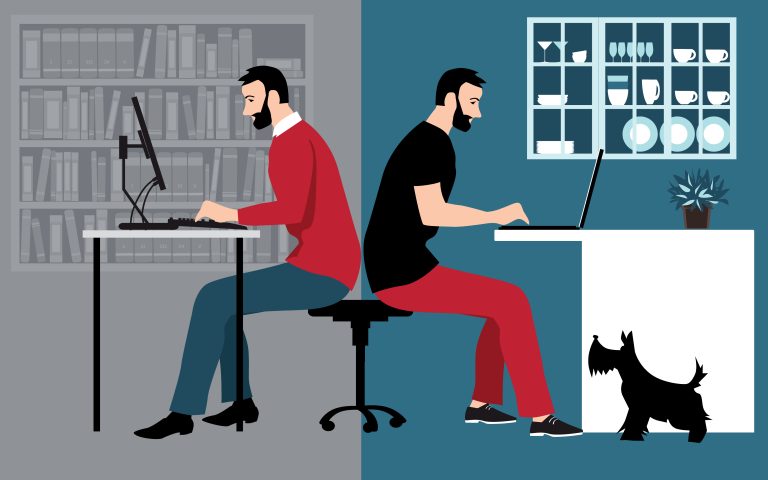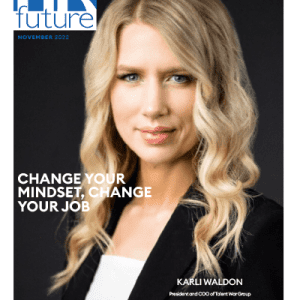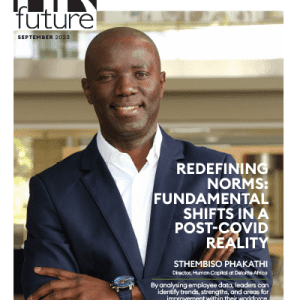In the ever-evolving landscape of modern work environments, Human Resources (HR) departments have expanded beyond traditional tasks like payroll, recruitment, and benefits administration. In today’s digital-first world, where employee engagement and experience play a key role in an organization’s success, HR must adopt the same design principles that shape products for customers. This is where a UX design agency can make a significant impact—by helping HR teams craft intuitive, efficient, and enjoyable experiences for employees.
The growing influence of UX design agencies on HR practices isn’t just a passing trend; it’s a natural progression. By improving the employee experience through thoughtful design, companies can enhance retention rates, boost engagement, and ultimately increase productivity. Let’s explore how partnering with a UX design agency can transform HR operations and drive employee satisfaction.
1. Understanding the Employee as a User
In UX, the primary focus is on the end user, understanding their needs, behaviors, and pain points. When this principle is applied to HR, the “end user” becomes the employee. By viewing employees as users, HR teams can adopt a mindset of designing every interaction—from recruitment to retirement—with the employee experience at the forefront.
For instance, onboarding processes are traditionally lengthy and cumbersome, involving mountains of paperwork and multiple steps that are overwhelming for new hires. A UX-centered HR department would redesign this process to ensure that it’s intuitive, user-friendly, and accessible. This could mean creating a digital onboarding platform with easy-to-follow steps, clear guidance, and support resources. Employees who feel supported and informed during onboarding are more likely to integrate smoothly into the company, reducing turnover in the critical early months of employment.
2. Simplifying Recruitment Through UX
One of the primary pain points in HR is recruitment. From the job applicant’s perspective, the hiring process can be tedious, often involving multiple applications, long waits for feedback, and confusing interfaces on job portals. Here, UX design can drastically improve the experience for both applicants and HR professionals.
– Streamlined Application Interfaces: By simplifying the user interface (UI) of job portals, job seekers can have a seamless experience when applying for positions. Intuitive navigation, clear instructions, and mobile-friendly applications can make the process less stressful for candidates.
– Enhanced Communication: Implementing clear and user-centered communication channels can keep candidates informed about their application status. Automated but personalized email updates or chatbots with human-like interactions can enhance transparency, reducing candidate frustration and improving their overall experience.
– Data-Driven Personalization: Recruitment software powered by UX design can create more personalized experiences for applicants by offering tailored job recommendations based on past applications or browsing behavior. This enhances not only candidate satisfaction but also the likelihood of finding the right match for the organization.
3. Employee Experience Platforms and UX
Digital platforms used for managing various aspects of employee life—such as benefits, payroll, training, and performance management—often suffer from poor design, making them difficult to navigate. Employees frustrated with complex systems may lose valuable time and become disengaged from the tools meant to support their growth and development.
Applying UX principles in the development and deployment of Employee Experience Platforms (EXP) can ensure that these systems are easy to use, functional, and even enjoyable. By creating an intuitive dashboard where employees can easily access all their essential information (like time off requests, payroll, and benefits), organizations can drastically reduce friction in day-to-day administrative tasks.
UX design can also help tailor the platform to the specific needs of different employee groups. For example, while managers might need more detailed performance analytics, individual contributors may prioritize features that allow for easier collaboration and feedback collection.
4. Enhancing Learning & Development with UX
Learning and development (L&D) is a cornerstone of long-term employee satisfaction and retention. However, many e-learning platforms and training modules used by organizations today can feel outdated, cluttered, or too difficult to navigate. As a result, employees may feel disengaged from important professional development opportunities.
By incorporating UX design into the development of learning platforms, companies can ensure that their employees have access to:
– Intuitive Learning Paths: A well-designed user interface helps employees find relevant courses and track their progress with ease. For instance, clearly marked pathways, gamification features, and bite-sized learning modules designed with UX principles can foster continuous engagement and make learning more accessible.
– Personalized Content: A UX-driven L&D platform can offer personalized learning content based on an employee’s career goals, skills gaps, and past learning history. This tailored approach encourages more meaningful participation and better learning outcomes.
– Mobile Accessibility: With the shift toward remote and hybrid work environments, employees need to access training resources on the go. UX-focused platforms can ensure mobile-responsive design, allowing employees to learn at their own pace, anytime, anywhere.
5. Employee Feedback Mechanisms
UX design places a strong emphasis on user feedback as a tool for continuous improvement. The same approach can be applied in HR through frequent and meaningful employee feedback mechanisms. However, traditional feedback surveys are often generic, lengthy, and poorly designed, leading to low engagement rates.
By applying UX principles to feedback collection, HR departments can create more engaging and user-friendly surveys. Features like real-time feedback tools, micro-surveys, and pulse checks can provide more relevant and timely insights. Additionally, designing feedback mechanisms with empathy ensures that employees feel heard and valued, which in turn fosters a positive organizational culture.
Moreover, UX design can help present data in a more visually appealing and actionable way for HR leaders, helping them make informed decisions on the basis of employee feedback. Interactive dashboards that use data visualization techniques can offer insights into key metrics such as employee engagement, satisfaction, and areas needing improvement.
6. Retaining Top Talent Through Better UX
Employee retention is a critical challenge for many organizations. While competitive salaries and benefits are important, workplace experience plays an equally significant role in keeping top talent. A UX-driven approach to HR ensures that employee needs and pain points are consistently addressed, leading to a more satisfying work environment.
For example, well-designed intranets can help employees stay connected, informed, and engaged with company news and updates. Effective employee engagement apps can promote teamwork and collaboration, while UX-optimized feedback tools can ensure that employees feel their voices are heard.
A focus on UX helps HR teams identify and remove friction points across the employee lifecycle—from recruitment to exit interviews. By making every touchpoint easy and intuitive, organizations can increase employee satisfaction and foster a sense of loyalty, ultimately reducing attrition rates.
7. The Role of UX in Change Management
In times of organizational change—such as mergers, restructuring, or adopting new technologies—the employee experience is often disrupted. Poorly managed transitions can lead to confusion, frustration, and decreased morale. This is where UX design can play a crucial role.
By approaching change management from a UX perspective, HR can design smoother, less disruptive transitions. For instance, a well-designed internal communication platform can guide employees through changes with clear, empathetic messaging. Interactive tutorials, intuitive FAQs, and user-centered support resources can help employees adapt to new tools and processes without feeling overwhelmed.
Conclusion
As businesses continue to focus on enhancing employee experiences, the role of UX design in HR is becoming indispensable. From recruitment to retention, performance management to employee engagement, UX principles help HR professionals create a seamless, satisfying journey for employees.
By treating employees as users and continuously iterating on their experiences, organizations can build stronger relationships, improve employee satisfaction, and drive overall organizational success. In the end, a thoughtful UX approach doesn’t just make things easier for HR—it makes work better for everyone.
Guest post.


























